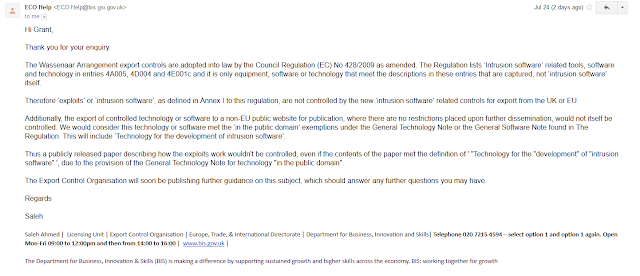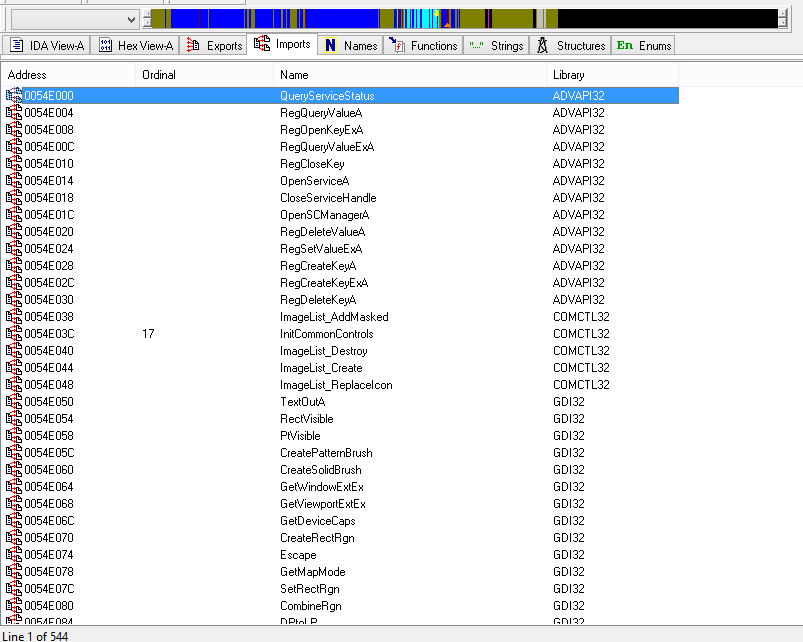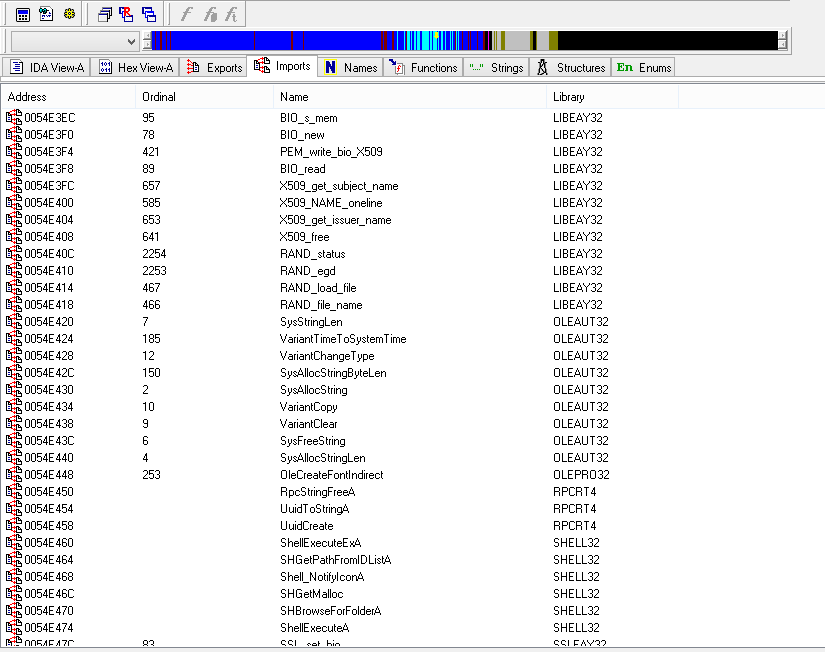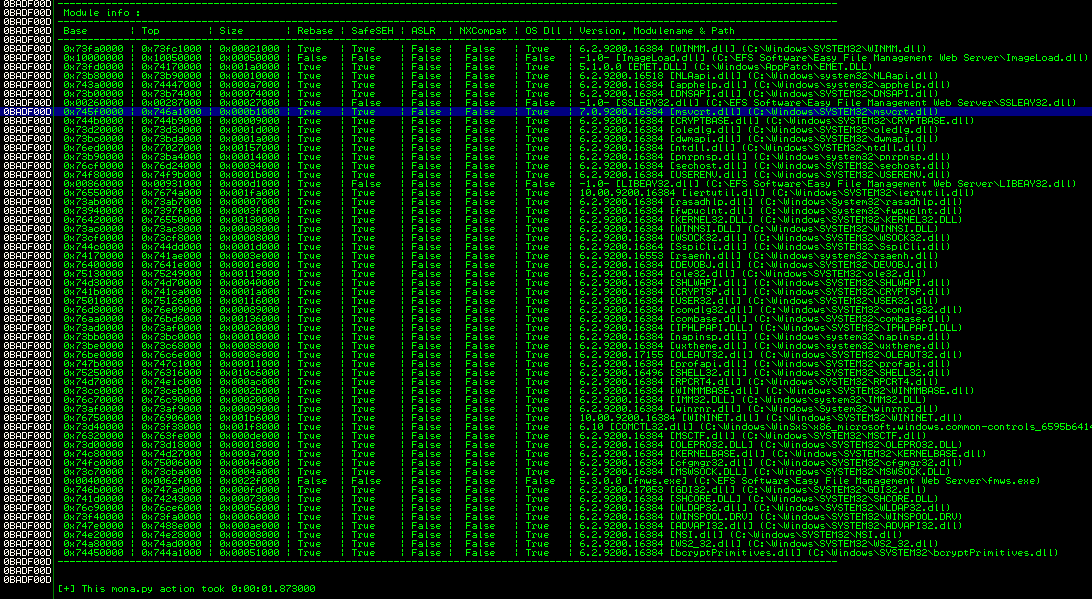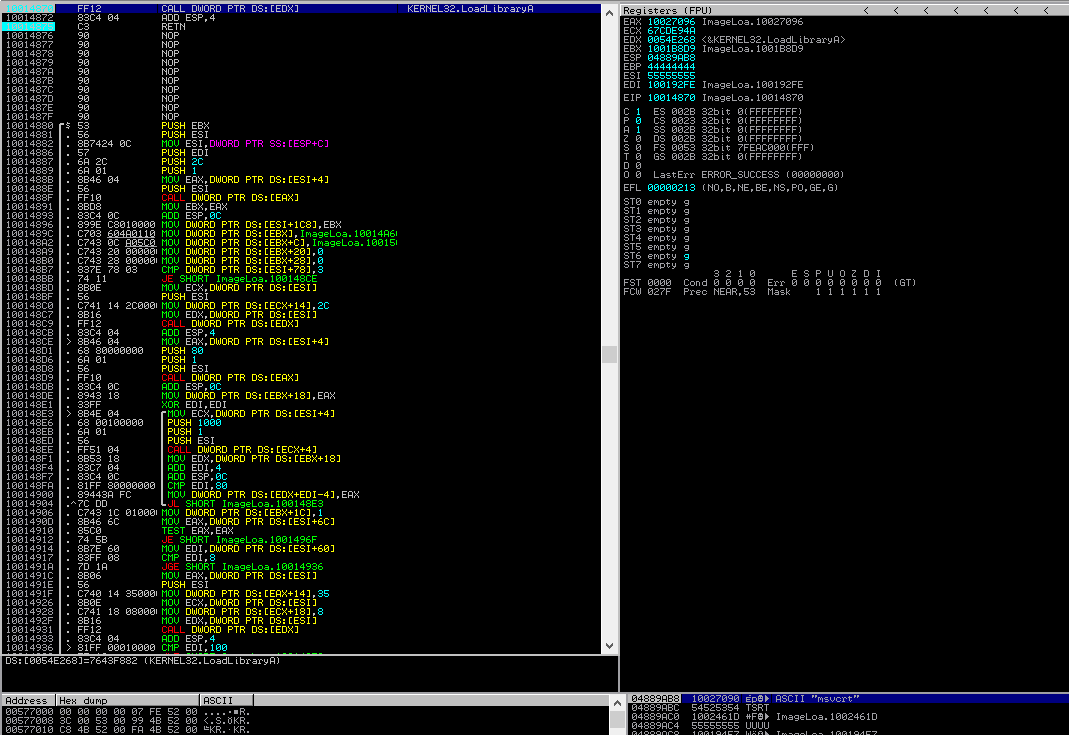The real problem for EMET is that the way this is implemented is essentially to have two contexts running for the application at the same time, one to support 32 bit (aka protected mode) operations and one to support 64 bit (aka long mode) operations. When I say two contexts I really do mean two contexts here. There are sepearte TEBs (thread execution block, which handles the threads for the program), PEBs (process execution block, which contains data structures which apply for the entire process), and a number of different DLL imports and redirects which all help to ensure that the application is able to run on the 64 bit operating system.
The problem that occurs here when one considers that an application can switch between 32 bit and 64 bit modes during execution with a single instruction. At this point it becomes very hard for EMET to properly enforce it's protections as whilst it may intially implement it's function hooks, hardware breakpoints and other protection mechanisms under the assumption that the application is running as 32 bit code, as soon as the application switches to 64 bit mode, these protections are essentially rendered useless as now different code, libraries, and execution environments are being used which are no longer subject to the protections implemented on the 32 bit code. To add further complications to the matter, even if these protections where to somehow be brought over from the 32 bit code, one has to reimplement them in 64 bit code to match the new execution environment, otherwise they would not function correctly.
What I found particularly interesting was in their"Address Space Layout Section" where they described how they attempted to find where the 64 bit copy of ntdll.dll that was loaded into the WoW64 process is located so they can start calling functions from it within their shellcode. In particular I found particular interest in their second point, which I'll quote here:
You may recall my post An Theoretical Approach to Getting Around EMET's EAF Protection in which I described a way to potentially get around EMET's EAF protection in a similar manner. By looking up a function with the export table which is located in the same DLL as the function we wish to call, we were able to obtain a base address from which to start our calculations. From there we abused the fact that functions within a DLL tend to be located at set offsets from one another to find the location of the function we wished to call by taking the address of the function that we had located from the export table and adding or subtracing the offset to get the address where our desired function had been loaded in memory. I did also note after some comments from Reddit that the exact offset may change across patch levels due to the fact that the size of different functions within the DLLs may change, thus affecting the exact size of the offsets between functions.The order in which modules are loaded is reliable, resulting in predictable module alignment presuming no change in module size (in practice, we have found this alignment to be reliable across a variety of patch levels).(https://www.duosecurity.com/static/pdf/WoW64-Bypassing-EMET.pdf)
In a similar manner, Duo Security managed to abuse the fact that the order in which the DLL's are loaded into a WoW64 process on Windows 7 are always located at set offsets from one another, assuming no change in module size. That sounds rather familar right? They even mention how changes in module (aka DLL) size and patch versions will mess up their technique. So it seems to be rather similar to the technique that I ended up using in my research paper.
I just wanted to point this out in case anyone was interested and also to bring up another point to think about when considering EMET bypasses, namely that whilst ASLR does have a large impact by preventing an attacker from learning the location where modules are loaded in memory, there are still ways, in the right environment, by which one can figure out their location without resorting to memory leaks or other exploits.
Will be interesting to see if anyone takes Duo Security's research and applies it to some real world public exploits as I would be interested to see how such techniques handle themselves when confronted with different vulnerable targets and exploit scenarios.
Until next time,
Grant (aka @tekwizz123)
